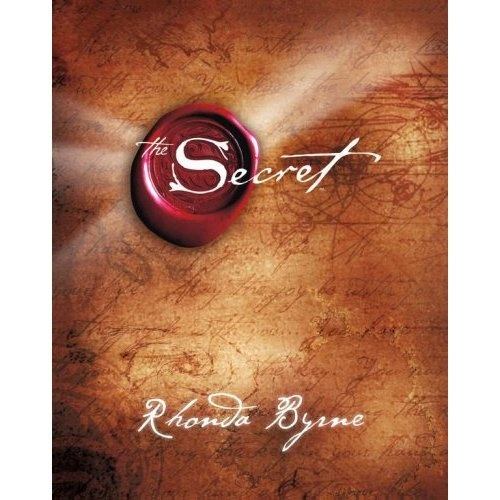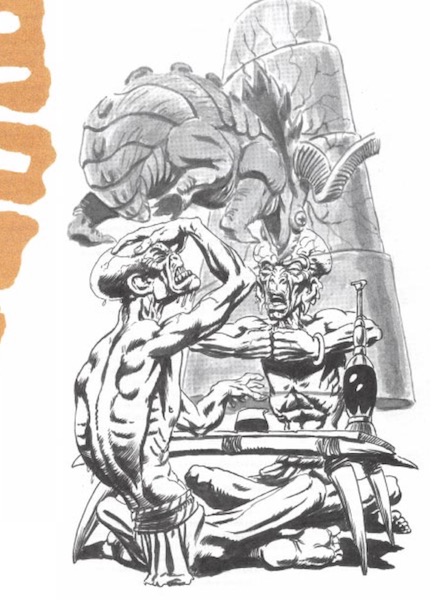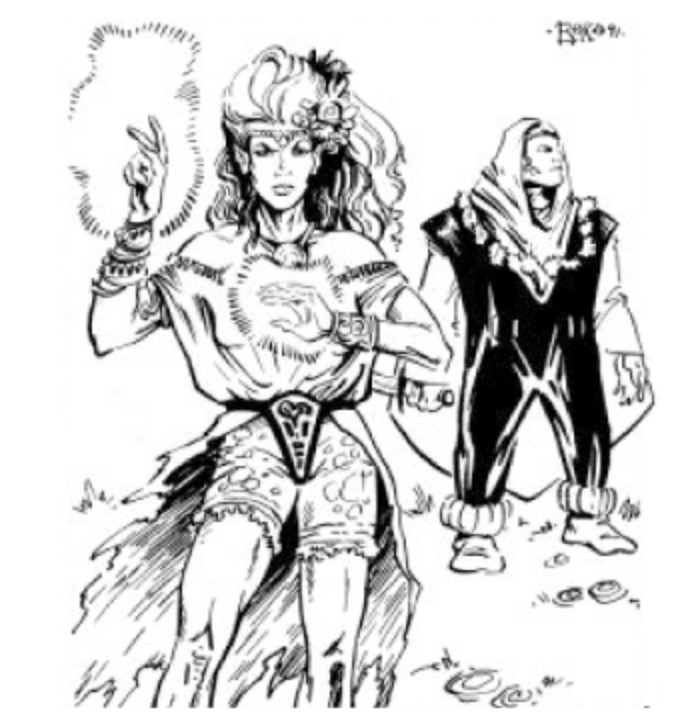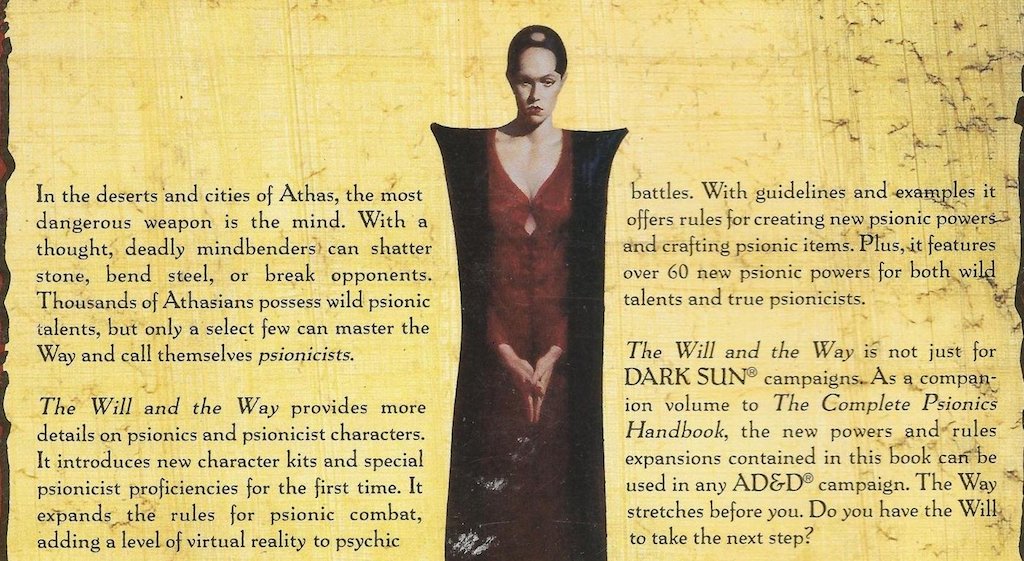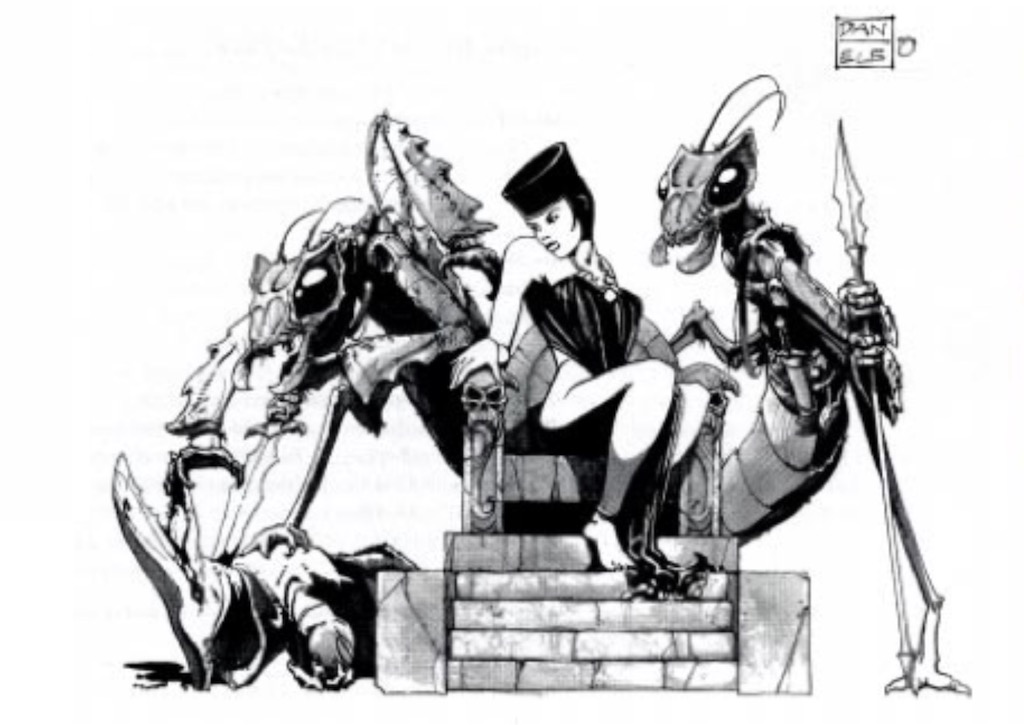D&D: Psionics of Athas


One of Dark Sun’s most defining characteristics is the power of the mind unleashed.
The burning wastes of Athas are home to many things, strange monsters, dark powers–but Athas was one of the first places where the power of the focused will was made manifest. That’s right, the secret power of Athas is apparently just The Secret.
Do you want to rule the blighted world of Dark Sun? Just set up a vision board!
Which I guess means that the burning wastes of the lands of Dark Sun–the dying world of Athas, defiled by sorceror-kings, abandoned by gods, and ruled by tyrants–will soon be run by the people keeping Modcloth in business. So if you’re looking for the future rulers of Athas, just go see who’s standing in line at Uniqlo.
Pictured: The Scions of Rajaat and the dragon Borys
But before the scorched wastelands of are reshaped, let’s look at why the “power of the mind” is so important to this world. The Complete Psionics Handbook may have updated and expanded Psionics for 2nd Edition, but Dark Sun really made them matter.
Psionics are an integral part of the history of Athas. This is one of those times when you really could see the power of narrative and rules working hand in hand. Psionics mattered to the history and story of the world, so in Dark Sun, every character, every monster, everything you could find (just about) had some kind of psionic talent. Even if it was just a wild talent.
Dark Sun also expanded psionics. In the Expanded and Revised Dark Sun new powers and even a whole psionicist class was added whole cloth. The psionic rules were revised and expanded right along with the history of Athas, that’s how integral they were to the campaign. Which I mention because right now 5th Edition is reaping the fruits of marrying narrative and mechanic. Mike Mearls and Jeremy Crawford have said time and again that they want to find a way to make Psionics fit the story of 5th Edition–and in the burning world of Athas, they have it.
It starts with the beginning of the world. Before even the first wizards arrived. Athas was not a world that arcane magic was native to–or perhaps it was, but its secrets had long been forgotten. In the earliest days of Athas, the world is run by Halfling mad scientist druids, basically. They are masters of nature, they experiment on living things and almost wipe out all life on the planet, and forever alter the sun with artifacts. You know, standard stuff–all lost to time, with legends of the Blue Age only barely surviving to recent history.
But all that’s primal magic, nature magic kinds of things. When the world becomes green, the Pyreen come into the scene.
These are powerful psionics (some of the first known ones, though psionics are common in the world) who literally reshape life. They help bring the world back from the brink of extinction, which is ironic, because one incredibly powerful pyreen, Rajaat, discovers Arcane magic and then ruins it all over again.
But psionics stick around. Because Athas is a world that is so divorced from magic and divinity and all the other usual fantasy trappings, psionics come to the forefront. Now partly this is because the Complete Psionics Handbook came out right alongside them, but also it really makes Dark Sun feel unique. Psionics have always been this thing in D&D that’s either: weird and few people use them, or, magic but with a different flavor. That’s what 3rd and 4th Edition did. There were slightly different systems in play, but for the most part, psionics were just another kind of magic, and vice versa. The two systems interacted with each other fairly easily (which you want). The Expanded Psionics Handbook is the exception–and that is honestly one fo the finest pieces of mechanical design that WotC has ever put out–that book is just a treasure trove of good design, rules, and lore. It did a lot to change the game and make psionics feel more like their own thing even if it was underappreciated at the time. But, we’re not here to muse about how these two systems should interact (though it is worth considering). Back to the burning wastes!
In Athas, Psionic power is referred to as The Will or The Way. Psionics have existed on Athas from time immemorial but the current practice of psionics in the world goes back about a thousand years to a founder named Tarandas, the Grey Lady or Tarandas of Raam.
Psionics have since spread to every major city-state in the setting. Nibenay has the School of the Augurs, Balic has the Cerebran. There’s a secret organization based out of a hidden mountain castle that calls itself The Order, and they are basically the psionic illuminati/justice league, except they exclusively deal with psionic threats.
There are even laws governing the use of psionics, where laws hold sway in Athas (so, not very many places). But where psionics really took off was in the Way of the Psionicist. This book was part of the Dark Sun: Expanded and Revised boxed set. It did a lot for the way psionics worked. Every character could have at least a single talent they could use, characters had pools of Psionic Strength Points (as before) but they idea of the Mental Armor Class surfaces around this idea–along with the Mental THAC0 and other systems. Basically this helped unify the way psionics work, making it easier to use the system as part of the game.
Accompanying this book were the same 5 attack and defense powers that have been part of psionics in D&D since the dawn of history: Ego Whip, Id Insinuation, Mind Thrust, Psionic Blast and Psychic Crush, countered by Intellect Fortress, Mental Barrier, Mind Blank, Thought Shield, and Tower of Iron Will.
And accompanying these legendary powers were all kinds of strange effects. 2nd Edition Psionics, and the Dark Sun ones in particular were much more personal focused. Magic might let you change the world, but Psionics let you change yourself. With psionics you could give yourself the ability to sense things you wouldn’t otherwise–like to feel sound, or sense poison, or even to sense the history of something; or perhaps improve your own combat prowess, making yourself faster or stronger, or giving yourself the ability to shape weapons out of your flesh. And these powers were all vaguely scientific. Psionic healing, for instance, fell under the sway of Cell Adjustment, where the psionicist would psychically tweak the cells of the body to heal wounds and cure diseases.
Again, there’s a lot of overlap between psionics and magic, but psionics still manage to carve out their own niche. They’re different enough to be their own thing–and in a world where magic is literally killing everything, psionics fill a need. I’ll be interested to see how they fit into the mix of 5th Edition. Right now, psionics in 5th Edition are just spells or other abilities that are given because a creature “is psionic.”
But we know that they want to introduce psionics into 5th Edition. It’s just a question of how. This is something they’ve been working on for almost two years now. We saw the latest version of the mystic in march last year, and before that it had been in development since 2016. So the time does seem to be nigh.
Until then, it’s matter over mind.


